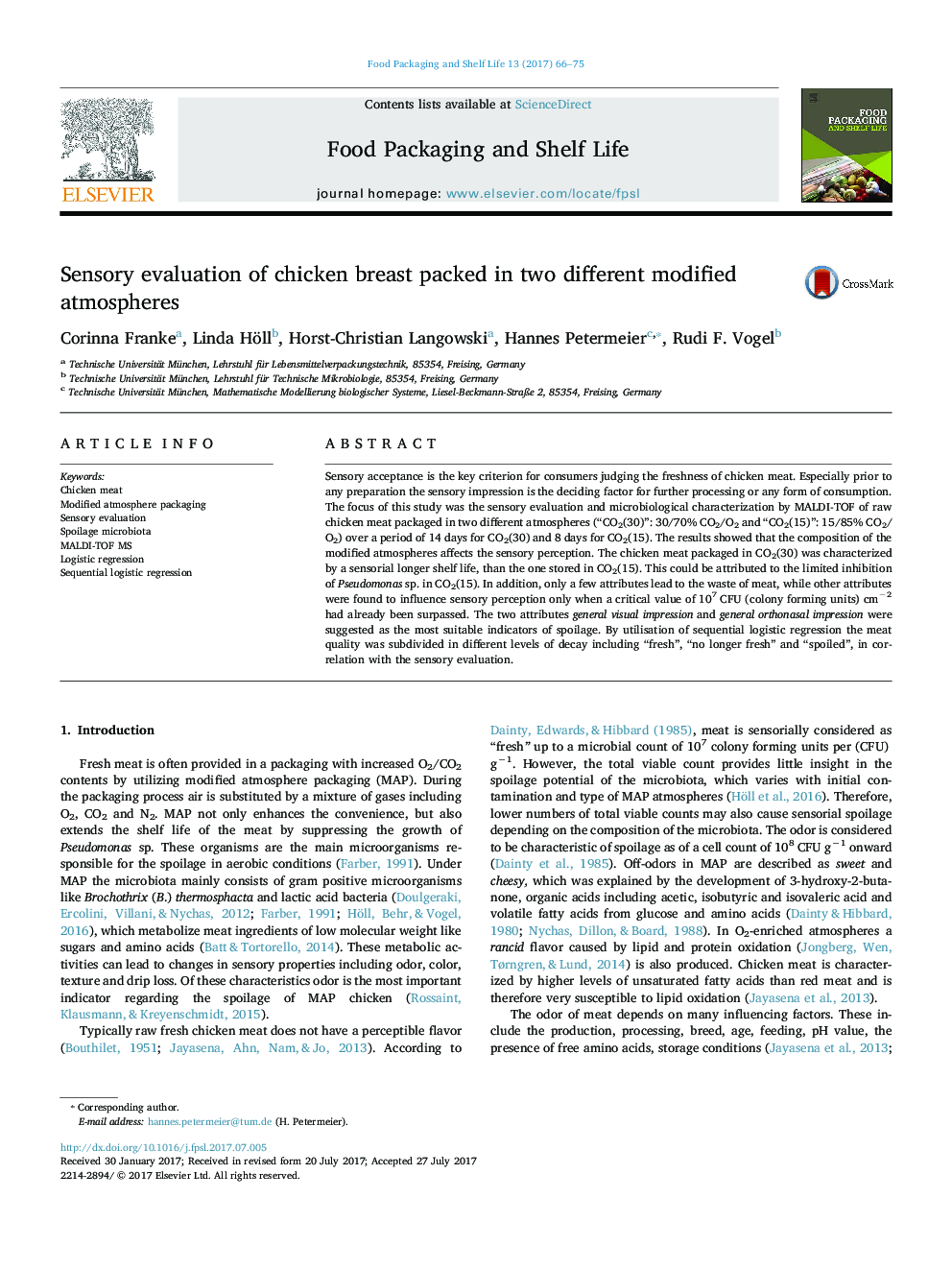| Article ID | Journal | Published Year | Pages | File Type |
|---|---|---|---|---|
| 4753121 | Food Packaging and Shelf Life | 2017 | 10 Pages |
Abstract
Sensory acceptance is the key criterion for consumers judging the freshness of chicken meat. Especially prior to any preparation the sensory impression is the deciding factor for further processing or any form of consumption. The focus of this study was the sensory evaluation and microbiological characterization by MALDI-TOF of raw chicken meat packaged in two different atmospheres (“CO2(30)”: 30/70% CO2/O2 and “CO2(15)”: 15/85% CO2/O2) over a period of 14Â days for CO2(30) and 8Â days for CO2(15). The results showed that the composition of the modified atmospheres affects the sensory perception. The chicken meat packaged in CO2(30) was characterized by a sensorial longer shelf life, than the one stored in CO2(15). This could be attributed to the limited inhibition of Pseudomonas sp. in CO2(15). In addition, only a few attributes lead to the waste of meat, while other attributes were found to influence sensory perception only when a critical value of 107 CFU (colony forming units) cmâ2 had already been surpassed. The two attributes general visual impression and general orthonasal impression were suggested as the most suitable indicators of spoilage. By utilisation of sequential logistic regression the meat quality was subdivided in different levels of decay including “fresh”, “no longer fresh” and “spoiled”, in correlation with the sensory evaluation.
Keywords
Related Topics
Physical Sciences and Engineering
Chemical Engineering
Bioengineering
Authors
Corinna Franke, Linda Höll, Horst-Christian Langowski, Hannes Petermeier, Rudi F. Vogel,
